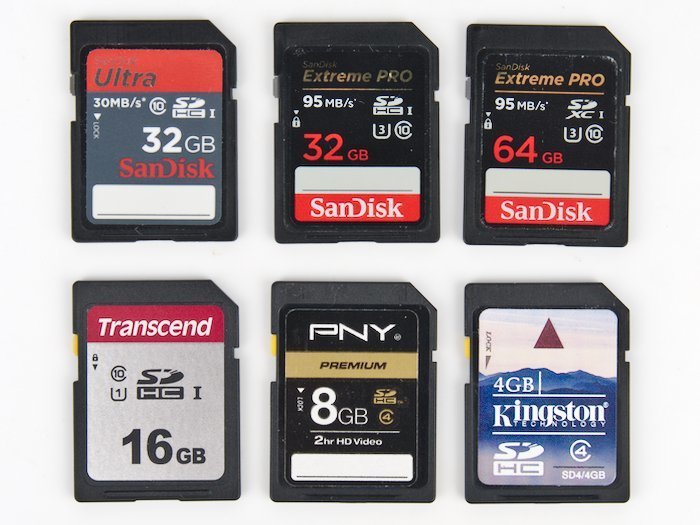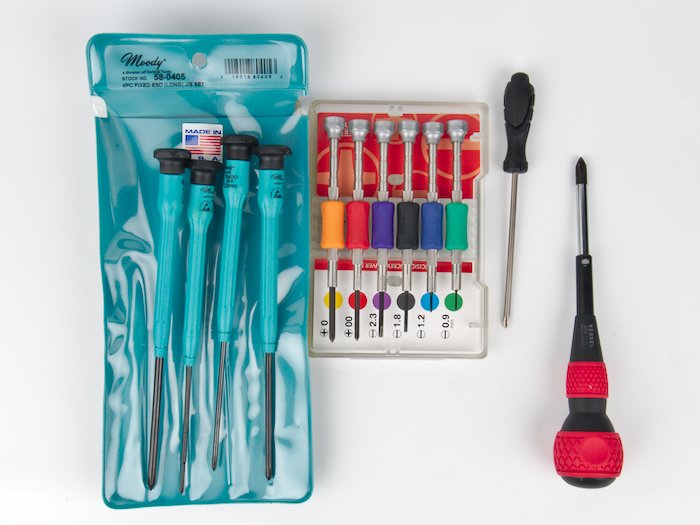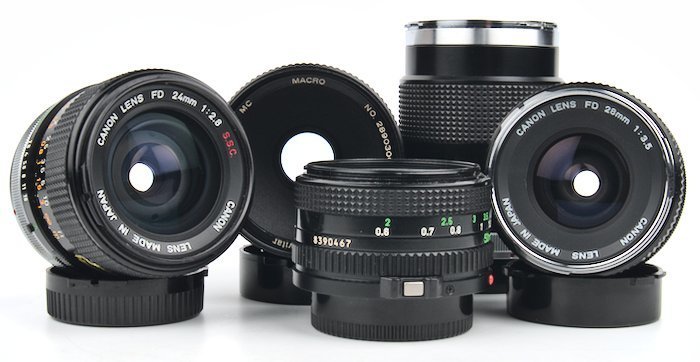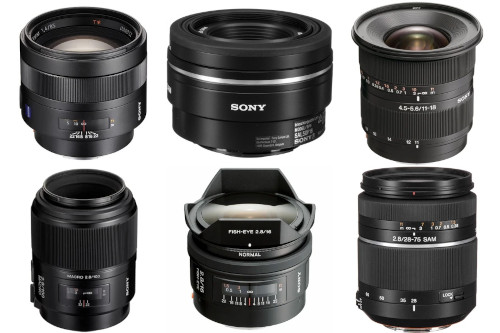
The 6 Best Lenses for the Sony A68
- Nathaniel Stephan
- Sony a68
- April 10, 2020
Table of Contents
The Sony A68 is an awesome camera. If you do not have a lens for your camera or are searching for a new lens, this article will talk about the best 6 lenses to have for the Sony SLT-A68.
Affiliate Advertising Disclosure
Outside the Shot is a participant in the Amazon Services LLC Associates Program, an affiliate advertising program designed to provide a means for sites to earn advertising fees by advertising and linking to Amazon.com.
As an eBay Partner, I may be compensated if you make a purchase. I also participate in affiliate advertising programs with KEH and Adorama. More can be found on the Affiliate Disclosure page.
What Lens Mount Does the A68 Use?
The Sony A68 uses the Sony A-mount. It’s also the same as the Minolta A-mount and also referred to as the Sony Alpha mount. The reason behind this is that Sony acquired Konica Minolta’s camera division in 2006.
The A-mount was developed by Minolta for the introduction of interchangeable lens autofocus cameras in 1985. The mount was officially discontinued in 2021, but there wasn’t very much support for it in the previous years.
Standard Primes
Sony 50mm f/1.8 SAM DT
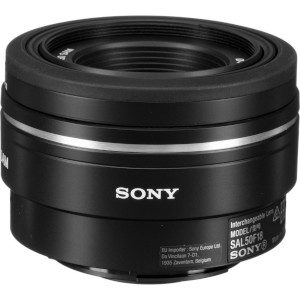
- Outstanding optics.
- Small and light weight.
- Can be difficult to find new.
- Smooth Autofocus Motor (SAM)
- Circular aperture.
See current price and more information on:
A superb combination of small size and lightweight. The built-in autofocus motor is more accurate and quieter than earlier lenses that rely on the physically coupled autofocus.
The rounded aperture blades allow you to close down by 2-stops and still have close to a circular aperture. The result is spectacular bokeh and more flexibility in managing your depth of field.
Minolta Maxxum AF 50mm f/1.7
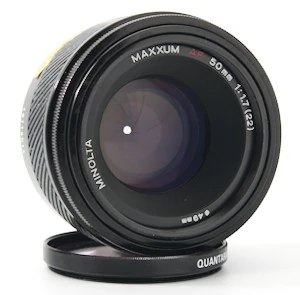
- Built-in lens hood.
- Amazing value.
- Light and compact.
- Widely available used.
- Coupled autofocus.
See current price and more information on:
This is an older design from the introduction of the A-mount for autofocus. Because of how old the lens is, the autofocus is driven by a motor built into the Sony A68 camera body.
Autofocus that is mechanically coupled can be noticeably noisy and laggy. Then again, if that’s not a concern for you the output is wonderful. {The bokeh is attractive and you will get a classic image rendering|You will end up with a classic rendering and eye-catching bokeh.
Another large advantage of the lens is the cost. It’s noticeably more inexpensive when compared with the Sony 50mm f/1.8 and also may be the cheapest lens on the list.
Sony 50mm f/1.4
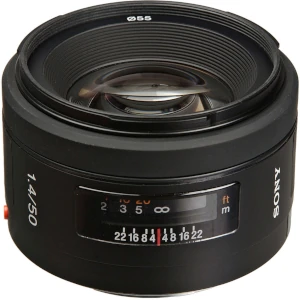
- Outstanding optics.
- Optical multi-coatings.
- Circular aperture.
- 55mm filter threads.
See current price and more information on:
This lens is a a little bit faster compared to the Sony f/1.8, which can be important when you are taking pictures in low light. That of course comes at a larger cost.
It is still a lightweight and small lens that fits well on the Sony SLT-A68 and will fit into practically any camera bag.
A moderately less expensive solution is the Minolta AF 50mm f/1.4. Take into account that copies can be quite challenging to get a hold of in good usable condition. It also uses coupled autofocus, which is worse than lenses that were designed with built-in autofocus motors}.
Portrait & Telephoto Lens
Sony 85mm f/1.4 ZA
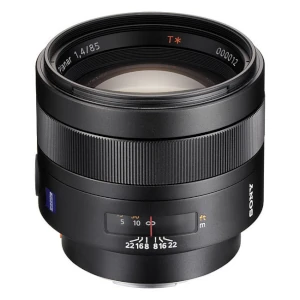
- Incredible bokeh.
- Excellent value used.
- T* coating to reduce flare and increase contrast.
- Astonishingly sharp wide open.
See current price and more information on:
Sony pulled out all the stops with this lens. The lens was manufactured by Zeiss. The ZA (Zeiss Alpha) shows that Zeiss created the lens exclusively for the Sony A-mount.
This is an exceptional lens to use with the Sony A68. Corner-to-corner sharpness with vivid color that delivers impressive portraits.
Potential downsides are that it’s a tad on the heavy side as a result of being built like a tank and it can seem slow to autofocus. Be aware, that you will find similar issues with any 85mm f/1.4.
Minolta Maxxum AF 85mm f/1.4
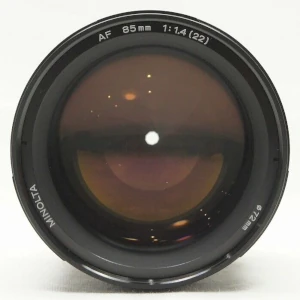
- Possible to find a good used deal.
- Superb image quality.
- Uses autofocus coupler.
- Double-Gauss design.
See current price and more information on:
This lens sits inbetween the price range of the other two lenses. Acquiring a used lens in good usable condition can be difficult because of a small available supply.
The lens does have autofocus, but it uses a mechanical coupler and is driven by an in-camera body motor. This makes it a bit noisy and slow to autofocus.
The lens is an older 6 lens element Double-Gauss design. A benefit to this is that images possess a distinct look that can not be created by current lenses that contain many more elements.
Sony A68 Zoom Lenses
Sony 28-75mm f/2.8
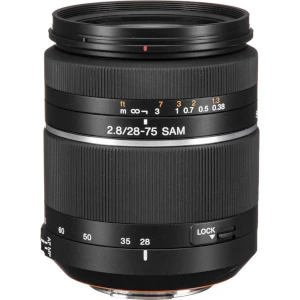
- Very usable zoom range.
- Great value used.
- Constant aperture.
- Smooth Autofocus Motor (SAM).
See current price and more information on:
A fast zoom lens that is outstanding for night events, travel, indoor shooting, and family photos. It’s a well made lens with fairly quiet autofocus, perfect for the A68.
It often gets compared to the excellent Zeiss 24-70mm, but it’s about half the weight and costs considerbly less. Both lenses create pro photos.
Sony 55-200mm f/4-5.6 SAM DT
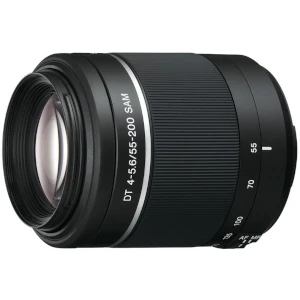
- Telephoto zoom range.
- Great for portrait or wildlife photography.
- Smooth Autofocus Motor (SAM).
- Inexpensive.
See current price and more information on:
While still delivering outstanding results, this is a cheaper selection. It’s not a pro lens, so so long as you do not need all the bells and whistles, it is a very good lens.
As a mid-range telephoto zoom, it offers a terrific range for capturing pictures of wildlife, sports, and children outdoors.
Photo sharpness is excellent and the autofocus is snappy. The lens is built of plastic, which helps reduce weight.
Sony 75-300mm f/4.5-5.6
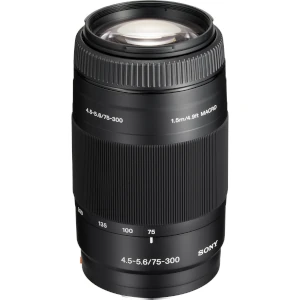
- Super telephoto zoom lens.
- Great for portrait or wildlife photography.
- 2.81 inches in diameter and 4.81 inches long.
- 55mm filter threads.
See current price and more information on:
This meets the criteria of a super-telephoto lens due to the zoom range. It’s a fantastic inexpensive option for any time you desire a lens with lots of reach.
It is 4.8 inches (12.2 cm) long, 2.8 inches (7.1 cm) in diameter, and is 1 pound 2 ounces (510g). While not considered light, many pro telephoto primes and zooms are multiple times heavier than that.
For a bit better performance try to find the Sony 70-300mm f/4.5-5.6 SSM ED G-Series, but unfortunately expect to pay about twice as much.
Wide Angle Lens
Sony DT 11-18mm f/4.5-5.6
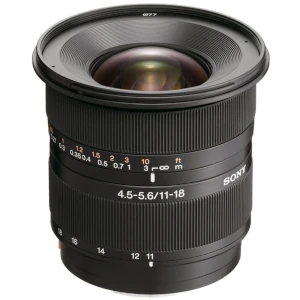
- Has a aspherical lens elements.
- Optical multi-coatings.
- Great value when purchased used.
- Circular aperture.
See current price and more information on:
Amazing value for the money if you want to capture excellent wide shots that a kit zoom can’t capture. Distortion, especially of straight vertical lines is low or non-apparent unless you’re intentionally trying to have an distorted perspective.
As well as being ideal at taking stunning landscapes, it’s also an outstanding lens to travel with on the Sony Alpha A68. The angle of view is wide enough so when you see something you will be able to get everything you see into the Sony A68’s frame.
Sony 20mm f/2.8
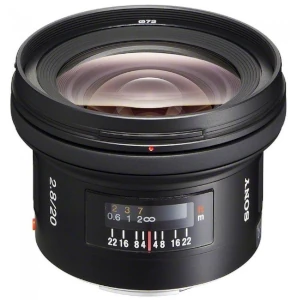
- Great for landscapes and architecture.
- Coated optics for clarity and definition.
- Rear focusing system for fast autofocus response.
- 72mm filter threads.
See current price and more information on:
A well engineered lens that does an outstanding job of reducing distortion. Furthermore, an enormous amount of work has been put into cutting down on internal reflections and flare.
The result is a good lens that is well suited for astrophotography, architecture, and landscape photography. The lens uses rear focusing which means the front does not rotate meaning you won’t have any problems using a polarizer or another filter.
Tokina AT-X 11-16mm f/2.8 DX II
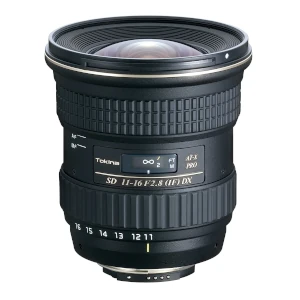
- Wide angle zoom lens.
- Hardened Alumite finish.
- Advanced optical coatings.
- All metallic moving parts.
- Designed for APS-C Sensors.
See current price and more information on:
It doesn’t have tremendously fast autofocus, but the auto/manual focus clutch makes it a fantastic option for manual focusing. A push or pull of the focus ring will switch the lens from AF to MF or vice versa.
The Tokina is faster when compared to the Sony 11-18mm, which isn’t a large deal for architecture or landscape photography. Where you will see a difference is during astrophotography. That’s a circumstance where you would want to take advantage of the 1-2 stop advantage the Tokina has.
Fisheye
Sony 16mm f/2.8 Fisheye
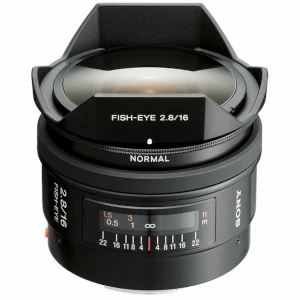
- Sharp corner-to-corner.
- 4 built-in filters: Normal, 056, B12, A12.
- 8 inch minimum focus distance.
- Aspherical and Extra-low Dispersion elements.
See current price and more information on:
Having built-in filters is an excellent inclusion because the lens has a petal-style hood which means a lens filter cannot be attached to the front of the lens.
- 056 - Accented contrast for black and white photos.
- B12 - Correct color by eliminating red tones.
- A12 - Correct color by eliminating blue tones.
This lens has pretty much everything you could need from a fisheye. You can get the exaggerated distortion, but the image will remain razor-sharp from corner-to-corner without vignetting.
Rokinon 8mm f/3.5 Fisheye
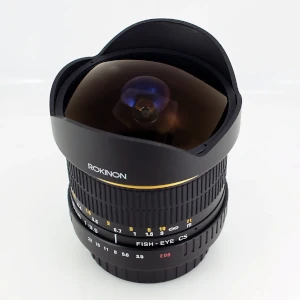
- Internal focus.
- 180 degree angle of view.
- Manual focus.
- Minimum focusing distance of 12 inches (0.3m).
- Designed for APS-C sensors.
See current price and more information on:
The lens features a spherical front element which means lens filters cannot be used. It comes with a detachable petal-shaped hood that you’ll want to ensure that it is included if you buy a used copy.
Construction quality will be hit or miss as a consequence of the affordable price of the lens. Most people are quite pleased with the results they get. It’s still important to completely check the lens when you receive it to be certain that the lens is not a defective copy.
Macro Lens
Sony 100mm f/2.8 Macro
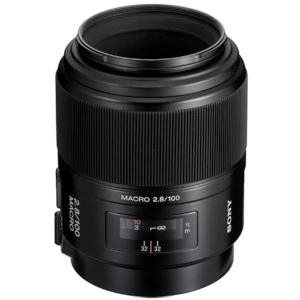
- 9 aperture blades.
- Focus range limiter.
- High contrast and resolution.
- 55mm filter threads.
See current price and more information on:
The perfect balance of cost, working distance, and size for the Sony A68. The autofocus is a little loud, but for shooting macro photos, manual focus is easier than using autofocus.
For the highest quality output at 1x magnification the lens should be stopped down. By doing that you will have a larger depth of field, which is crucial for macro.
Sony 50mm f/2.8 Macro
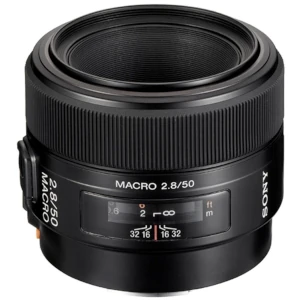
- 10.4 ounces (295g).
- Focus range limiter.
- Focus Hold button for full creative control.
- 55mm filter threads.
See current price and more information on:
A 50mm is not the best for 1x magnification due to how small the working distance will be. At that level of magnification, the front of the lens will have to be around 2 inches (5 cm) away from the subject.
This lens is ideal for close-up, tabletop, and copy work. It gives you the option to get closer to a subject than a standard 50mm lens, and that is great for nature photography if you want to fill the camera frame with a small subject, such as a flower.
Tamron AF 90mm f/2.8 Di SP A/M 1:1 Macro
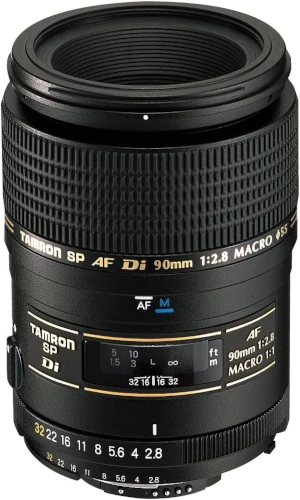
- Available in a variety of camera mounts.
- Improved resolution, chromatic correction, and optical coatings.
- Super Performance (SP)
- Focus clutch to switch between AF & MF.
See current price and more information on:
In addition to having autofocus, the focus ring feels great when manually focusing. Stopped down at least a couple of stops and you’ll get tack sharp shots.
In additon, be cautious when buying it as it’s built in various camera mounts.
Used A-Mount Camera Lens Prices
Prices are regularly changing. Over the past few years, interest in film photography has been expanding. Since there are 35mm Minolta film cameras that use A-mount lenses, some additional demand is put on the price of lenses.
The Sony A-mount also doesn’t have a major share of the market. Because of that, fewer third party options are available and the lenses made by Sony are very often on backorder.
To get the cheapest price, check out prices on several sites. For pre-owned lenses, be prepared to pay for when you find a deal as they usually do not last long.
Standard Lens Cap Size
Generally 55mm, but honestly the filter sizes are all over the place. Older Minolta lenses tend to have 49mm filter threads.
You will also find several lenses that have filter threads larger than 55mm. It’s not hard to find to see 77m or 72mm filter threads. It would have been helpful if Sony made use of only 2 or 3 different filter sizes.
